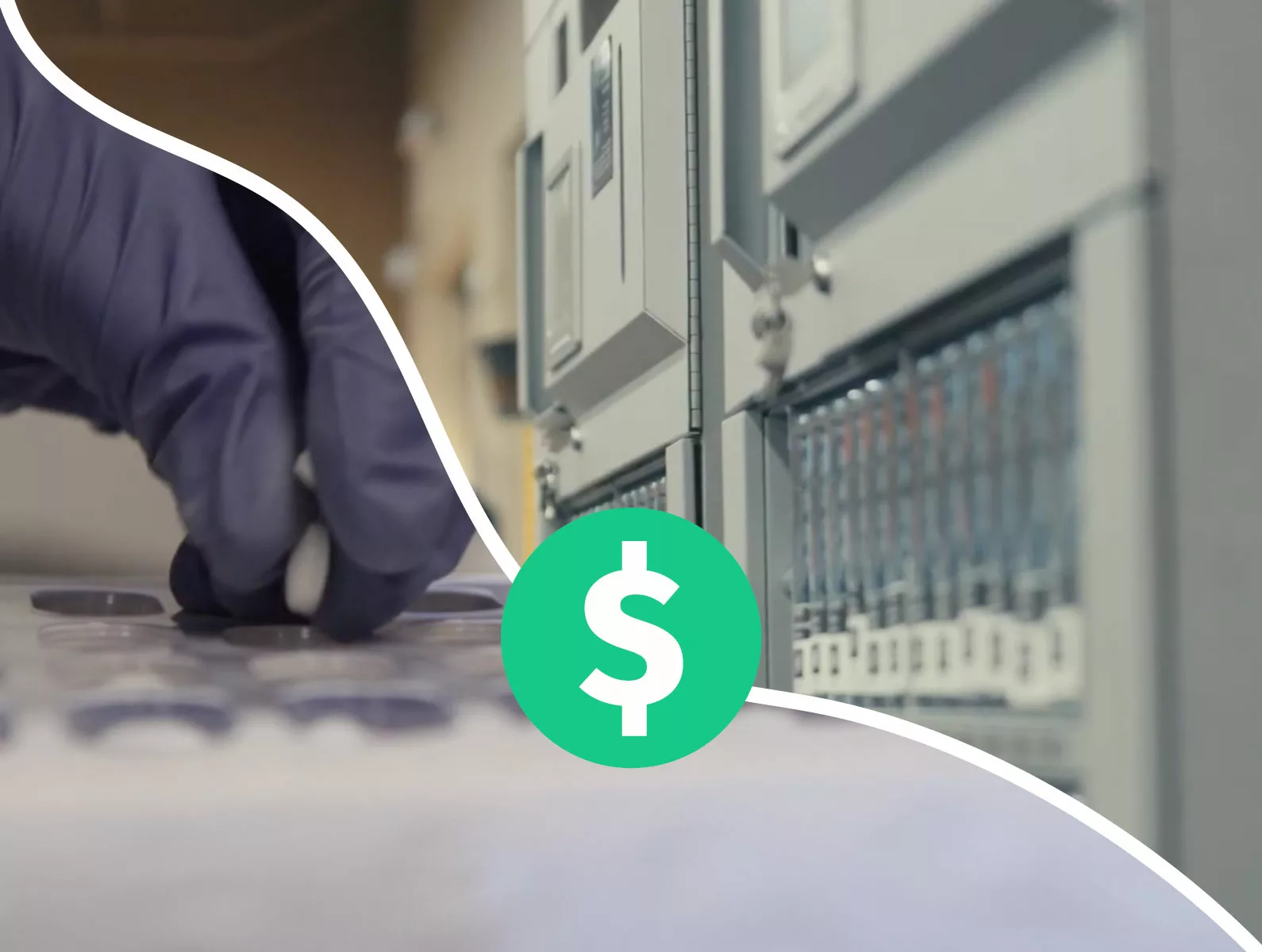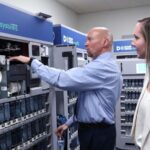
Can Pharmacy Automation Reduce Operating Expenses? Labor Cost Scenario.
April 23, 2024
Let’s delve into a case study involving a pharmacy tasked with filling 50,000 blister cards monthly to analyze the impact of automation on operational expenses.
Manual Filling Analysis:
75% of the cards are pre-packaged, while the remaining 25% are produced on-demand. We estimate 1,583 technician hours across 10 Technicians.
| Patient-labeled Blister Cards | Tech Hours | Technicians | |
|---|---|---|---|
| Pre-packaging | 37,500 | 750 hours | 5 |
| On-Demand | 12,500 | 833 hours | 5 |
| Total | 50,000 blister cards | 1,583 hours | 10 technicians |
Cost for Technicians: The cost for 10 technicians to fill 50,000 cards is approximately $32,400 per month.
| Cost per hour | Tech Hours | Cost | |
|---|---|---|---|
| Pre-pack techs | $18 (includes taxes, benefits, etc) | 500 hours | $9,000 |
| Advanced techs | $22 (includes taxes, benefits, etc) | 750 hours | $5,400 |
| On-Demand techs | $22 (includes taxes, benefits, etc) | 833 hours | $18,000 |
| Total | (10 technicians) | 1,583 hours | $32,400 |
Automated Filling
Now, let’s explore the integration of automation into the workflow.
With a 3 automation towers DOSIS Systems will fill, seal and label 70% of the total card volume. Managing the automation hardware requires 3-4 hours per-day, per-tower, resulting in 219 technician hours monthly. Combining manual and automation management hours, the pharmacy requires approximately 657 technician hours monthly across 4 technicians.
| Patient-labeled Blister Cards | Tech Hours | Technicians | |
|---|---|---|---|
| Prepackaging | 11,250 | 188 hours | 2 |
| On-Demand | 3,750 | 250 hours | 2 |
| Automated Fill | 35,000 | 219 hours | – |
| Total | 50,000 blister cards | 657 hours | 4 technicians |
Cost for Production: Adding up the labor cost and the automation expenses we estimate spending $26,222 per month.
| Cost per hour | Tech Hours | Cost | |
|---|---|---|---|
| Pre-pack techs | $18 (includes taxes, benefits, etc) | 113 hours | $2,034 |
| Advanced techs | $22 (includes taxes, benefits, etc) | 75 hours | $1,620 |
| On-Demand techs | $22 (includes taxes, benefits, etc) | 250 hours | $5,400 |
| Automation Cost | 3 Towers + 219 hours of technician management | 219 hours | $17,168 |
| Total | (4 technicians) | 657 hours | $26,222 |
Comparative Analysis
By transitioning to automation, the pharmacy achieves significant efficiencies:
- A reduction from 10 to 4 required technicians
- Decrease in total technician hours from 1,583 to 657 monthly
- Monthly operating expense savings of $6,179
| Manual Fill | Automation (DOSIS Systems) | NET SAVINGS | |
|---|---|---|---|
| % Manual Fill | 100% | 30% | 70% |
| Required Technicians | 10 | 4 | 6 |
| Total Technicians Hours | 1,583 | 657 | 927 |
| Total Cost of Production | $32,400 | $26,222 | $6,179 per month |
Conclusion
In many cases, automation can positively impact the bottom line. There are many variables to consider as you evaluate the use of automation and how it can impact your pharmacy’s OPEX.
If you are interested to go into more detail about your pharmacy, schedule a demo with a product specialist. We go over the features of DOSIS Systems alongside the the financial impact it could have on your operations. Schedule a Demo today to find out more.
Automation Savings Calculator
Estimate the amount of savings you could have using our calculator.
Get started
We’d love to give you a Demo
Seeing is believing with the DOSIS System. See for yourself the value of DOSIS workflow through a full demo of a working system.
Schedule a Demo




